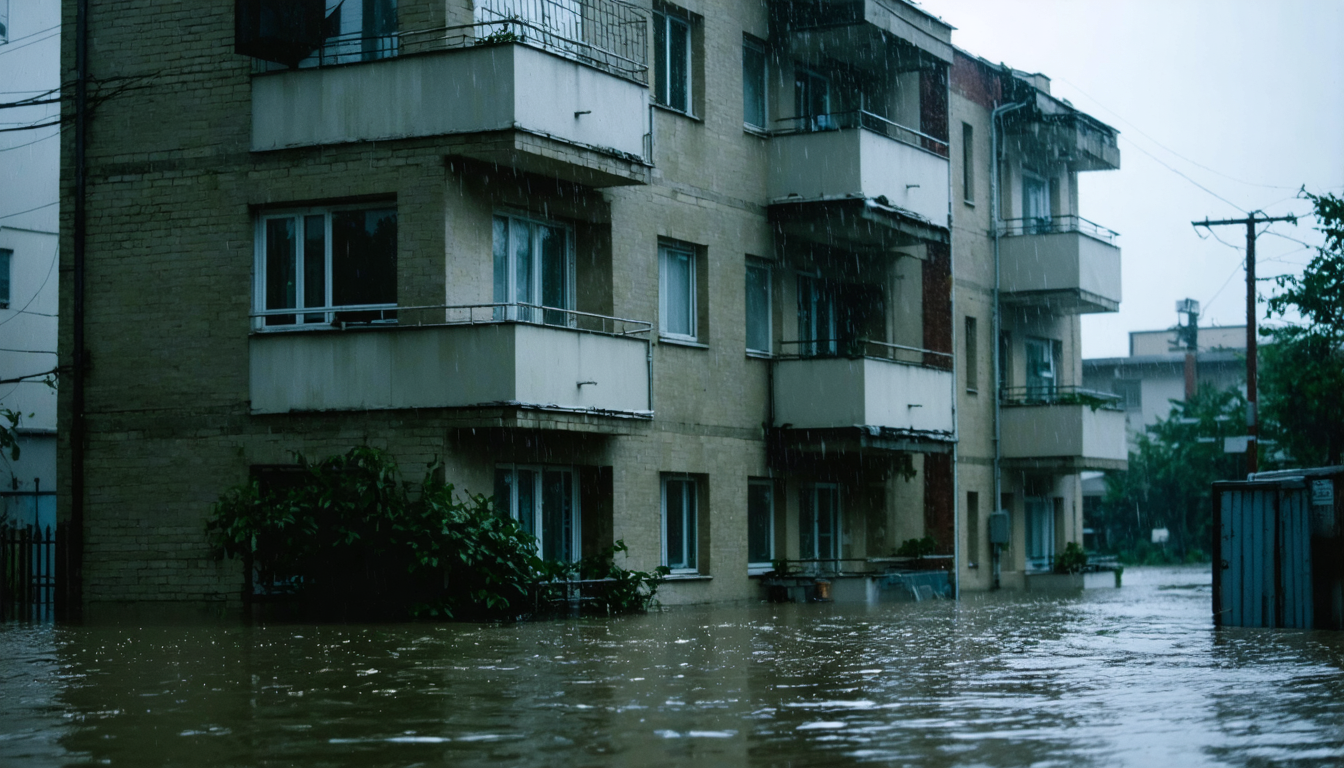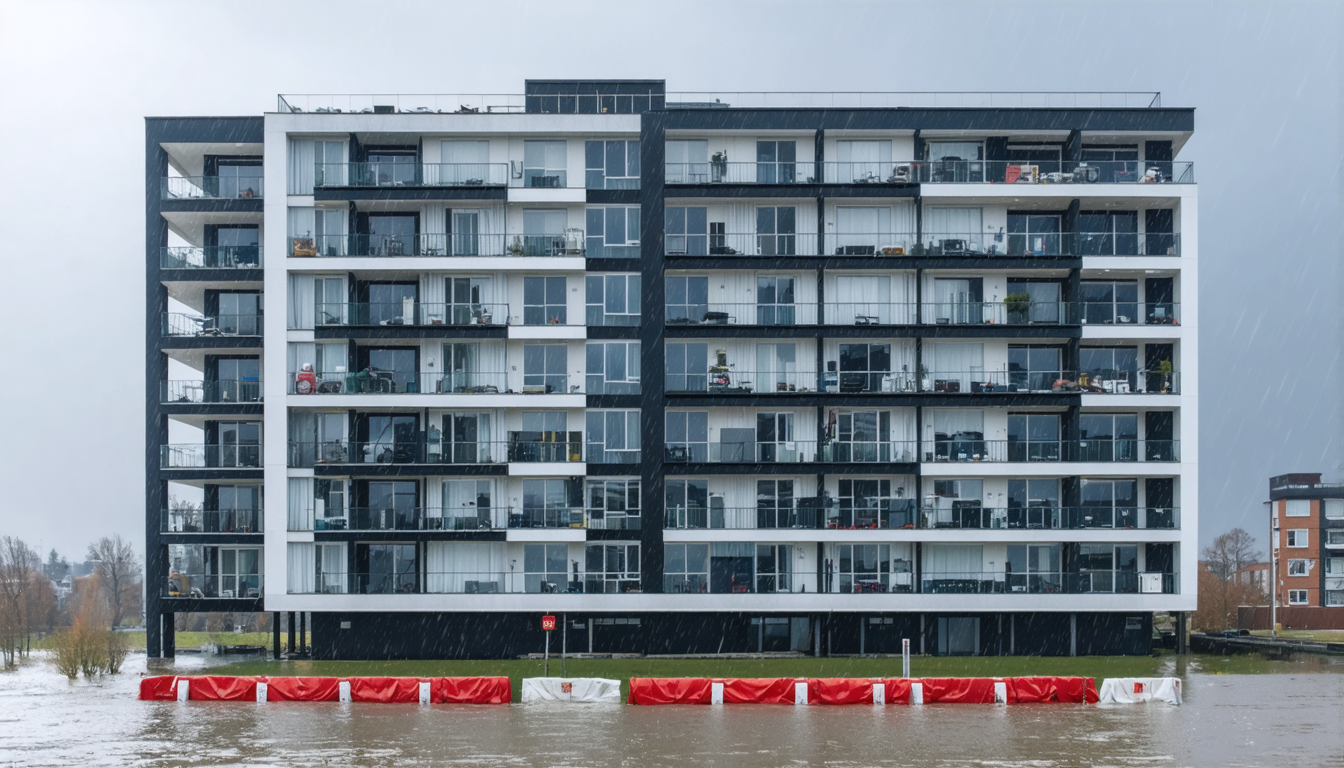- 1. Introduction: Assessing Flood Risk and Water Damage in Apartment Building Insurance
- 2. The Importance of Flood Risk Evaluation
- 3. Understanding Water Damage Coverage in Insurance
- 4. Common Causes of Flooding in Apartment Buildings
- 5. Flood Mitigation Strategies for Property Owners
- 6. How Insurers Assess and Calculate Risk
- 7. The Role of Regular Property Inspections
- 8. Case Studies: Successful Risk Management
- 9. Legal and Financial Implications of Flood Damage
- 10. Future Trends in Apartment Building Insurance and Flood Risk Management
- 11. Conclusion
1. Introduction: Assessing Flood Risk and Water Damage in Apartment Building Insurance
Flood risk evaluation and proper water damage coverage are critical concerns for apartment building owners, property managers, and insurers alike. While owners often focus on occupancy and general maintenance, failing to assess flood risk can lead to devastating financial losses.
In this article, we explore the importance of flood risk evaluation, water damage coverage, common flood causes, mitigation strategies, risk assessment methods used by insurers, the role of regular property inspections, and emerging trends. Our goal is to provide practical advice so readers can navigate the complexities of apartment building insurance confidently.

2. The Importance of Flood Risk Evaluation
Understanding your property’s vulnerability to flooding is a crucial step in safeguarding your investment. Flood risk evaluation involves a careful study of the geographical area, historical flood data, local weather patterns, and potential climate change impacts.
For property owners, this research can clarify what existing coverage might not include. For insurers, thorough analysis ensures that premiums reflect actual risk levels.
3. Understanding Water Damage Coverage in Insurance
Water damage coverage is a critical component of many insurance policies designed for apartment buildings. It typically covers repairs, replacement of damaged assets, and sometimes temporary relocation expenses.
However, the specifics can vary widely among insurers. Many standard policies might exclude damages resulting from floods unless additional flood insurance is purchased.

4. Common Causes of Flooding in Apartment Buildings
Flooding can result from a variety of factors, some of which often occur simultaneously. Key causes include:
• Heavy Rainfall: Prolonged periods of rain can saturate the soil and overwhelm drainage systems, leading to floods.
• Rising Water Levels: Proximity to rivers, lakes, or coastal shores means that elevated water levels may infiltrate the building.
• Storm Surges: Coastal apartment buildings face risks from storms that drive sea water inland, causing severe damage.
• Plumbing Failures: Burst pipes and faulty plumbing systems, though not natural disasters, can lead to significant water damage.
• Urban Development: Increased paving and reduced green space can reduce natural water absorption, leading to greater surface runoff.

5. Flood Mitigation Strategies for Property Owners
Mitigating the risk of flood damage requires a combination of structural improvements, smart maintenance practices, and emergency preparedness. Here are some practical strategies property owners can implement:
• Install Flood Barriers: Protective barriers can prevent water from entering critical areas of a building.
• Improve Drainage Systems: Regular maintenance and upgrades to drainage pipes and gutters help ensure that excess water is efficiently drained away.
• Elevate Critical Infrastructure: Placing electrical systems, HVAC units, and other vital components on higher platforms minimizes damage risk.
• Landscape for Water Flow: Designing landscaping that encourages water absorption can help redirect water away from the building.
• Regular Inspections: Routine checks by professionals can detect vulnerabilities early and allow owners to implement timely repairs.
• Emergency Preparedness Plans: Having a well-rehearsed emergency action plan can reduce harm to tenants and property during sudden floods.

6. How Insurers Assess and Calculate Risk
Insurers use various methods to assess flood risk and calculate appropriate premiums. They analyze historical flood data, local environmental conditions, geographic information systems (GIS), and climate models. Many insurers use advanced algorithms and risk assessment tools to predict vulnerabilities specific to each property. Factors considered include:
• Building Location: Proximity to water bodies or flood-prone zones.
• Construction Quality: The durability of building materials and adherence to flood-resistant design.
• Previous Claims History: Past incidents of water damage often affect premium calculations.
• Maintenance Records: Regular repairs and updates can reduce perceived risks.
• Community Infrastructure: Local flood defenses, drainage systems, and emergency response capabilities also play a significant role.
7. The Role of Regular Property Inspections
Regular property inspections are fundamental to early detection of flood-related vulnerabilities. Inspections help identify issues such as clogged pipes, structural weaknesses, or outdated drainage systems. When detected early, these issues are easier and less expensive to repair. Moreover, a proactive inspection regime can lower insurance premiums by demonstrating a commitment to maintenance and responsible management practices.
8. Case Studies: Successful Risk Management
Numerous apartment building owners have successfully implemented flood risk management strategies that have paid off in the long run. For example, one urban property near a river undertook extensive flood barrier installations and drainage upgrades after a minor flood incident. This proactive step not only safeguarded the building in subsequent heavy rainfall events but also led to reduced insurance premiums due to the lower perceived risk.
9. Legal and Financial Implications of Flood Damage
When flood damage occurs, the legal and financial repercussions can be substantial. Property owners may face lawsuits from tenants due to habitability issues, breach of lease contracts, or injury claims arising from unsafe conditions. Often, improper risk assessments or inadequate insurance coverage exacerbate these issues, leaving owners vulnerable to costly litigation.
10. Future Trends in Apartment Building Insurance and Flood Risk Management
The future landscape of apartment building insurance is set to evolve with advancements in technology and the increasing frequency of climate-related events. Digital tools such as predictive analytics, remote sensing, and smart home technologies are rapidly transforming risk assessment methods. These innovations enable insurers to provide more personalized policies based on real-time data, while property owners benefit from early warnings and efficient response systems.
11. Conclusion
Assessing flood risk and understanding water damage coverage are not merely insurance formalities—they are vital practices for safeguarding apartment buildings and ensuring long-term stability. By recognizing the importance of flood risk evaluation, understanding the nuances of water damage coverage, and implementing effective mitigation strategies, property owners can significantly reduce their exposure to flood-related losses. Thorough inspections, diligent maintenance, and informed collaboration with insurers are key to managing risk. As technology evolves and climate patterns shift, the insurance industry and property owners alike must remain vigilant and proactive. With practical steps and continuous adaptation, stakeholders can confidently manage flood risk while protecting investments, ensuring tenant safety, and optimizing insurance coverage for the future.
